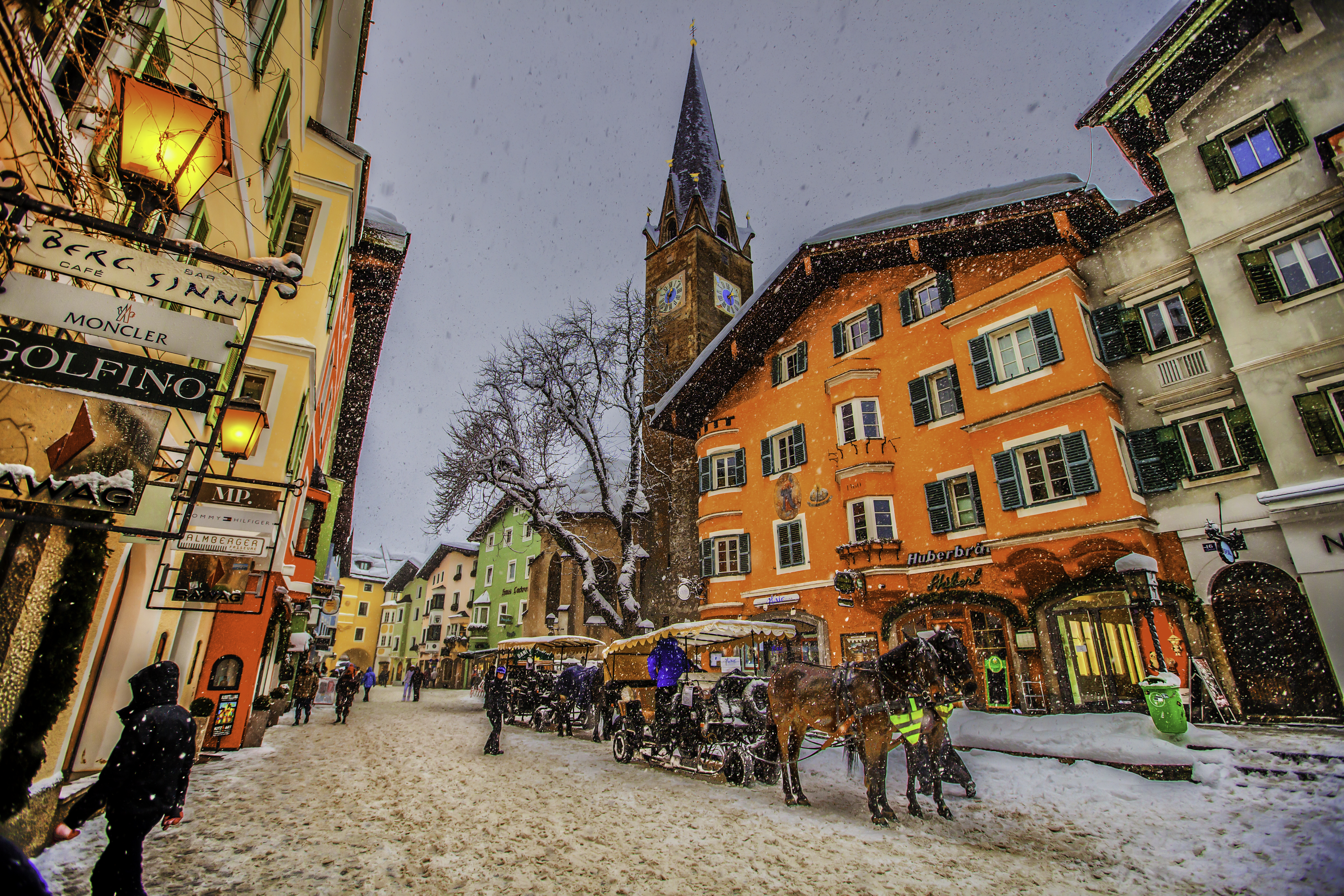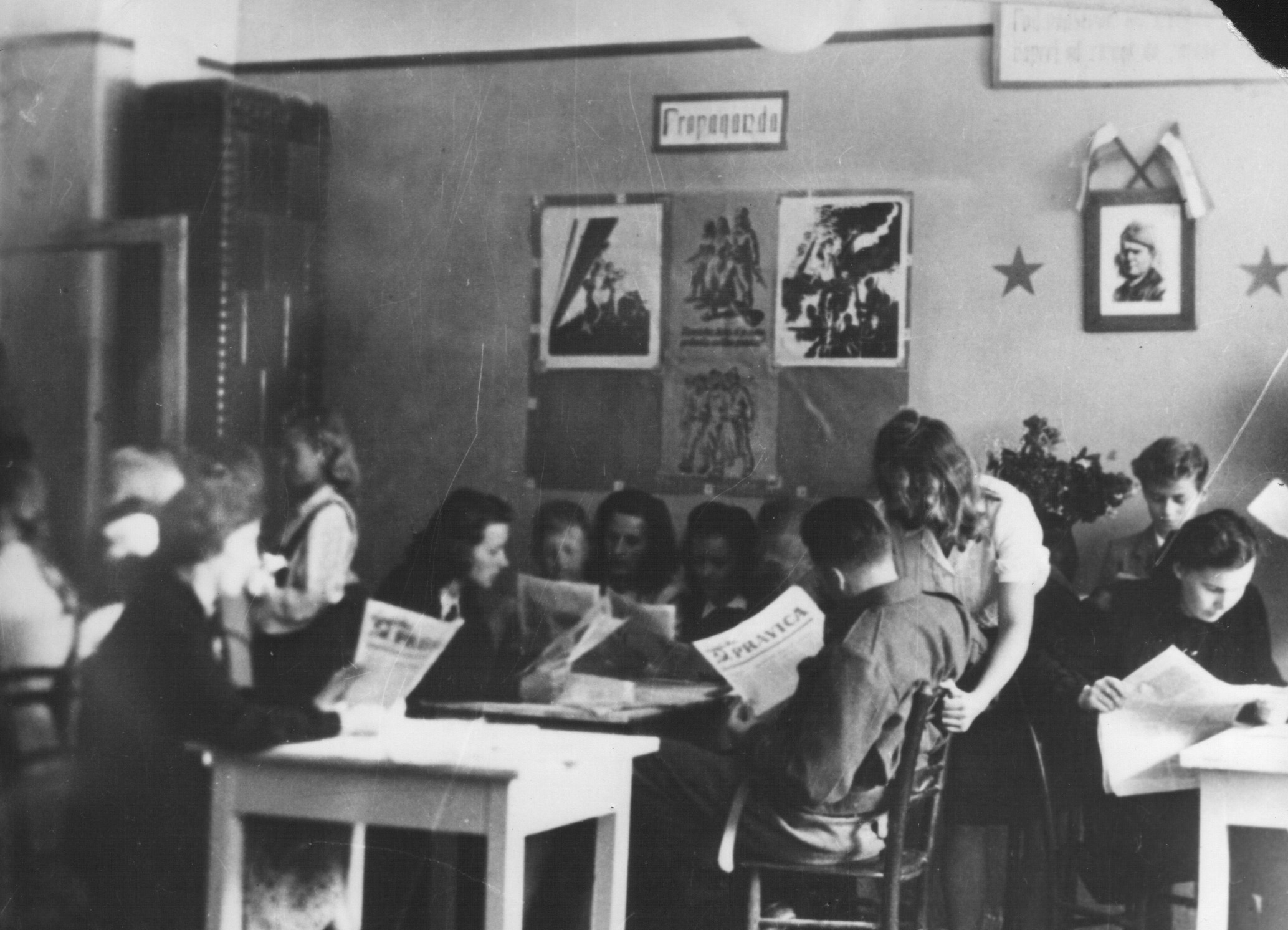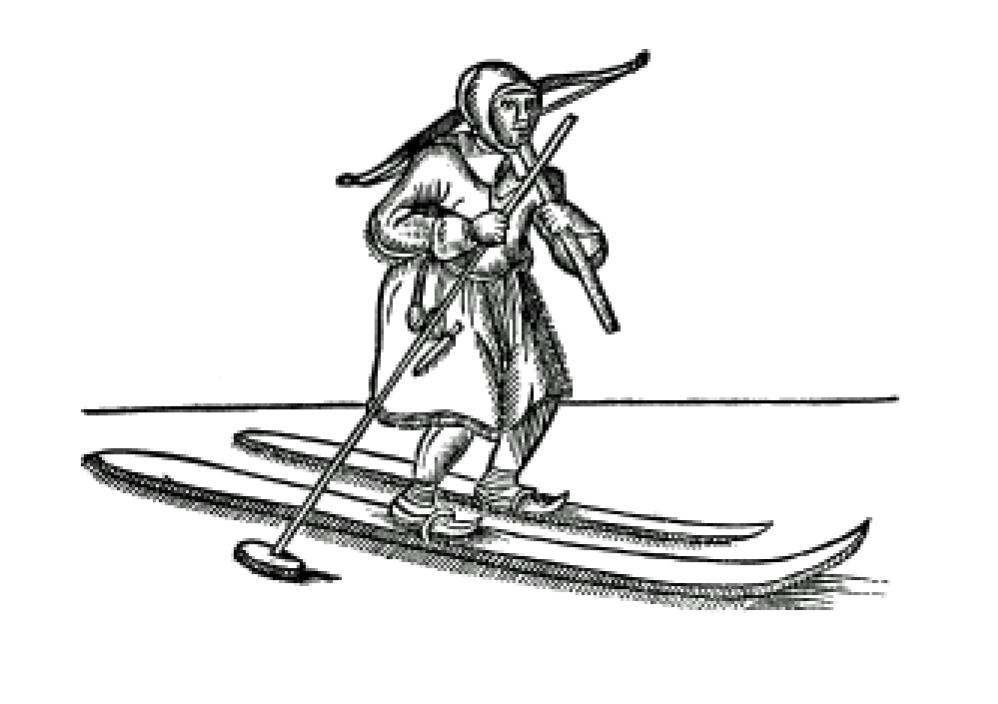|
Kranjska Gora Ski Resort
Kranjska Gora Ski Resort is Slovenia's oldest ski resort at Kranjska Gora, Upper Carniola, opened in 1948. It is divided into five different sections under the Vitranc Mountain, streched throughout the whole valley of the Kranjska Gora Municipality, same name municipality: Mojstrana, Kranjska Gora, Planica, Podkoren 1, and Podkoren 2. It has a total of of ski slopes, tracks for cross-country skiing, and Snow Fun Park. Since 1961, resort is hosting Vitranc Cup, one of the oldest and most prestigious active alpine skiing competitions in the world, and being classic regular World Cup host since 1968 FIS Alpine Ski World Cup, 1968 season. "Podkoren 3", which is hosting World Cup events since 1983, is the steepest and most difficult groomed ski course in Slovenia with maximum incline at 30.5° degrees (59%). History 1948: First ski lift in Slovenia On 29 November 1948, first ever Slovenian ski resort and lift (surface) was officially opened at "Preseka" slope. It was 960 m long an ... [...More Info...] [...Related Items...] OR: [Wikipedia] [Google] [Baidu] |
Kranjska Gora Municipality
The Municipality of Kranjska Gora (; sl, Občina Kranjska Gora) is a Municipalities of Slovenia, municipality on the Sava Dolinka, Sava Dolinka River in the Upper Carniola region of northwest Slovenia, close to the Austrian and Italy, Italian borders. The seat of the municipality is the town of Kranjska Gora. Geography The municipality is located in the Upper Sava Valley, a typical Alpine valley. Located at the far northwest of Slovenia where the borders of Slovenia, Austria, and Italy meet, the valley is embraced on the north and south by the peaks of the Karawanks and the Julian Alps. In the east its border runs just below the town of Jesenice, Jesenice, Jesenice, where the valley opens up towards the Radovljica Valley, extending in the west along the watershed between the Sava and Slizza rivers, just west of Rateče. In the north the Wurzenpass at Podkoren leads to Arnoldstein in Carinthia (state), Carinthia, in the south the Vršič Pass connects it with Trenta, Slovenia, Tre ... [...More Info...] [...Related Items...] OR: [Wikipedia] [Google] [Baidu] |
Patrick Russel
Patrick Russel (born 22 December 1946) is a former French Alpine ski racer and World Cup champion. He specialized in the technical disclipines (giant slalom and slalom) and won three discipline championships in the World Cup: slalom in 1969 and 1970 and giant slalom in 1971. He also won two silver medals in slalom and combined at the 1970 World Championships at Val Gardena, Italy. Career Russel was the son of Lee Russel, who was a marketing executive at the French ski manufacturer Rossignol. He competed on the World Cup circuit from 1968 through 1972 and became the first male to win World Cup races in three straight years (1968–70) and in four straight years (1968–71). Overall, he won 13 World Cup races and achieved 26 podiums during his career, as well as three discipline championships (slalom in 1969 and 1970; giant slalom in 1971) and two World Championship silver medals in 1970. In 1970, he finished second overall in the World Cup (only 3 points) behind Karl Schr ... [...More Info...] [...Related Items...] OR: [Wikipedia] [Google] [Baidu] |
Kitzbühel
Kitzbühel (, also: ; ) is a medieval town situated in the Kitzbühel Alps along the river Kitzbüheler Ache in Tyrol, Austria, about east of the state capital Innsbruck and is the administrative centre of the Kitzbühel district (). Kitzbühel is one of the most famous and exclusive ski resorts in the world. It is frequented primarily by the international high society and has the most expensive real estate in Austria. The proximity to Munich has made it a preferred location for vacation homes among the German elite. Geography Kitzbühel is situated in the Kitzbühel Alps between Zell am See and Innsbruck. It lies in the Leukental valley on the Kitzbüheler Ache river. The town is subdivided into the municipalities of Am Horn, Aschbachbichl, Badhaussiedlung, Bichlach, Ecking, Felseneck, Griesenau, Griesenauweg, Gundhabing, Hagstein, Hausstatt, Henntal, Jodlfeld, Kaps, Mühlau, Obernau, Schattberg, Seereith, Siedlung Frieden, Am Sonnberg, Sonnenhoffeld, Staudach, Stockerdör ... [...More Info...] [...Related Items...] OR: [Wikipedia] [Google] [Baidu] |
Streif
Streif is a World Cup downhill ski course in Austria, located on Hahnenkamm mountain (Kitzbühel Alps) in Kitzbühel, Tyrol, competing for the Hahnenkamm Races since 1937. It runs on natural terrain (pasture in summer) with minor modifications done over the years, next to the “ Ganslern” course. With 50,000 people attending, the Streif is the most visited ski event each year, with many famous people having attended, including Arnold Schwarzenegger. It is the most famous, the most prestigious and the most watched ski competition, with a global audience of about 300 milion people annually. History From 1931 until 1936 it was held on the nearby courses "Hahnenkamm" and "Ehrenbachhöhe". Since its inception in 1937, the Hahnenkamm slalom is held on this course (Ganslern). In 1954, one time exceptionally no Hahnenkamm Trophy was awarded, they were competing on the so-called "Vorderganslern" at Austrian International Winter Sports III competition. In 2006, morning fog at th ... [...More Info...] [...Related Items...] OR: [Wikipedia] [Google] [Baidu] |
Seppuku
, sometimes referred to as hara-kiri (, , a native Japanese kun reading), is a form of Japanese ritual suicide by disembowelment. It was originally reserved for samurai in their code of honour but was also practised by other Japanese people during the Shōwa period (particularly officers near the end of World War II) to restore honour for themselves or for their families. As a samurai practice, ''seppuku'' was used voluntarily by samurai to die with honour rather than fall into the hands of their enemies (and likely be tortured), as a form of capital punishment for samurai who had committed serious offences, or performed because they had brought shame to themselves. The ceremonial disembowelment, which is usually part of a more elaborate ritual and performed in front of spectators, consists of plunging a short blade, traditionally a ''tantō'', into the belly and drawing the blade from left to right, slicing the belly open. If the cut is deep enough, it can sever the abdominal ... [...More Info...] [...Related Items...] OR: [Wikipedia] [Google] [Baidu] |
Josef Stiegler
Josef "Pepi" Stiegler (born 20 April 1937 in Lienz, Austria) is a former alpine ski racer and Olympic gold medalist. He was a member of the Austrian national ski team during the late 1950s and early 1960s and was one of the world's premier racers. His two children are on the U.S. Ski Team: daughter Resi (b. 1985) is on the World Cup team and son Seppi (b. 1988) is on the Nor-Am circuit. At the 1960 Winter Olympics of Squaw Valley, Stiegler won a silver medal in the giant slalom and took fifth place in the slalom. At the 1964 Winter Olympics of Innsbruck, he took the bronze medal in giant slalom at Axamer Lizum and then won the gold in slalom, edging out American medalists Billy Kidd and Jimmie Heuga. - He became "Austrian sportsman of the Year 1964". Pepi Stiegler later made appearances at many ski events in the United States and wrote articles for ski magazines. In 1965, he became the first ski school director at Jackson Hole, Wyoming, where he served for 29 years, followed ... [...More Info...] [...Related Items...] OR: [Wikipedia] [Google] [Baidu] |
Delo (newspaper)
''Delo'' ( en, Labour) is a national daily newspaper in Slovenia. For more than 60 years, ''Delo'' has been involved in active co-creation of the Slovenian public space. It covers politics, economics, sports, culture and social events in Slovene. In addition to Slovenia, the paper is available in several Croatian cities and in Belgrade, Serbia. It is based in Ljubljana. History ''Delo'' was first published on 1 May 1959 when the newspapers '' Ljudska pravica'' ("The People's Right"), which was published since 1934, and '' Slovenski poročevalec'' ("The Slovene Reporter"), established in 1938, both the newspapers of the Communist Party of Slovenia, merged. Among the chief editors were Dušan Benko, Darijan Košir, Peter Jančič, and Uroš Urbas. Profile ''Delo'' is published in broadsheet format by media house Delo which also owns newspaper ''Slovenske novice''. It offers content in print and also on web, mobile and tablet platforms. It publishes a mixture of different media, ... [...More Info...] [...Related Items...] OR: [Wikipedia] [Google] [Baidu] |
Podkoren 3
Podkoren 3 is a black World Cup technical ski course on Vitranc mountain in Podkoren, Kranjska Gora, Slovenia, opened in 1983. It was constructed by Peter Lakota, a successful Slovenian skier. It has been hosting slalom and giant slalom for Vitranc Cup (Pokal Vitranc) since then. It replaced previous slopes; Bukovniški smuk (1961–70) and old gas station slope (1971–83). With 59% incline at start of giant slalom, it is the ski slope with the steepest part in Slovenia. It is located close to Planica and Rateče (near the Italian and Austrian borders). This slope is considered one of top three hardest giant slaloms in the world, together with Alta Badia (ITA) and Adelboden (SUI). The slope is part of "Podkoren I" section, one of four, right in the middle of Kranjska Gora Ski Resort. History On December 1983, this course was officially opened with women's and men's slalom (20,000 people), replacing the old previous course above the nearby gas station. In 1985, total of ... [...More Info...] [...Related Items...] OR: [Wikipedia] [Google] [Baidu] |
1968 FIS Alpine Ski World Cup
The 2nd World Cup season began in January in West Germany and concluded in April in the US Jean-Claude Killy of France repeated as the overall champion, and announced his retirement from World Cup competition. Nancy Greene of Canada repeated as the women's World Cup overall champion, and announced her retirement from World Cup competition. For the only time, the results of the Winter Olympics were included in the season standings. Future Olympic results were not included as World Cup races, nor were World Championship results after 1970. However, the inclusion of the Olympics was irrelevant to the final outcome, as both Killy and Greene would have won the season titles had the Olympics been excluded. Calendar Men Note: Race 7, 8 and 9 were the Olympic events at Grenoble, which count also for the World Cup. See also 1968 Winter Olympics and Alpine skiing at the 1968 Winter Olympics.Race 10 and 11 were held on the same day. Ladies Note: Race 9, 10 and 11 were the Oly ... [...More Info...] [...Related Items...] OR: [Wikipedia] [Google] [Baidu] |
Alpine Skiing
Alpine skiing, or downhill skiing, is the pastime of sliding down snow-covered slopes on skis with fixed-heel bindings, unlike other types of skiing ( cross-country, Telemark, or ski jumping), which use skis with free-heel bindings. Whether for recreation or for sport, it is typically practiced at ski resorts, which provide such services as ski lifts, artificial snow making, snow grooming, restaurants, and ski patrol. "Off-piste" skiers—those skiing outside ski area boundaries—may employ snowmobiles, helicopters or snowcats to deliver them to the top of a slope. Back-country skiers may use specialized equipment with a free-heel mode, including 'sticky' skins on the bottoms of the skis to stop them sliding backwards during an ascent, then locking the heel and removing the skins for their descent. Alpine skiing has been an event at the Winter Olympic Games since 1936. A competition corresponding to modern slalom was introduced in Oslo in 1886. Participants and venues ... [...More Info...] [...Related Items...] OR: [Wikipedia] [Google] [Baidu] |
Cross-country Skiing
Cross-country skiing is a form of skiing where skiers rely on their own locomotion to move across snow-covered terrain, rather than using ski lifts or other forms of assistance. Cross-country skiing is widely practiced as a sport and recreational activity; however, some still use it as a means of transportation. Variants of cross-country skiing are adapted to a range of terrain which spans unimproved, sometimes mountainous terrain to groomed courses that are specifically designed for the sport. Modern cross-country skiing is similar to the original form of skiing, from which all skiing disciplines evolved, including alpine skiing, ski jumping and Telemark skiing. Skiers propel themselves either by striding forward (classic style) or side-to-side in a skating motion (skate skiing), aided by arms pushing on ski poles against the snow. It is practised in regions with snow-covered landscapes, including Europe, Canada, Russia, the United States, Australia and New Zealand. Competiti ... [...More Info...] [...Related Items...] OR: [Wikipedia] [Google] [Baidu] |






